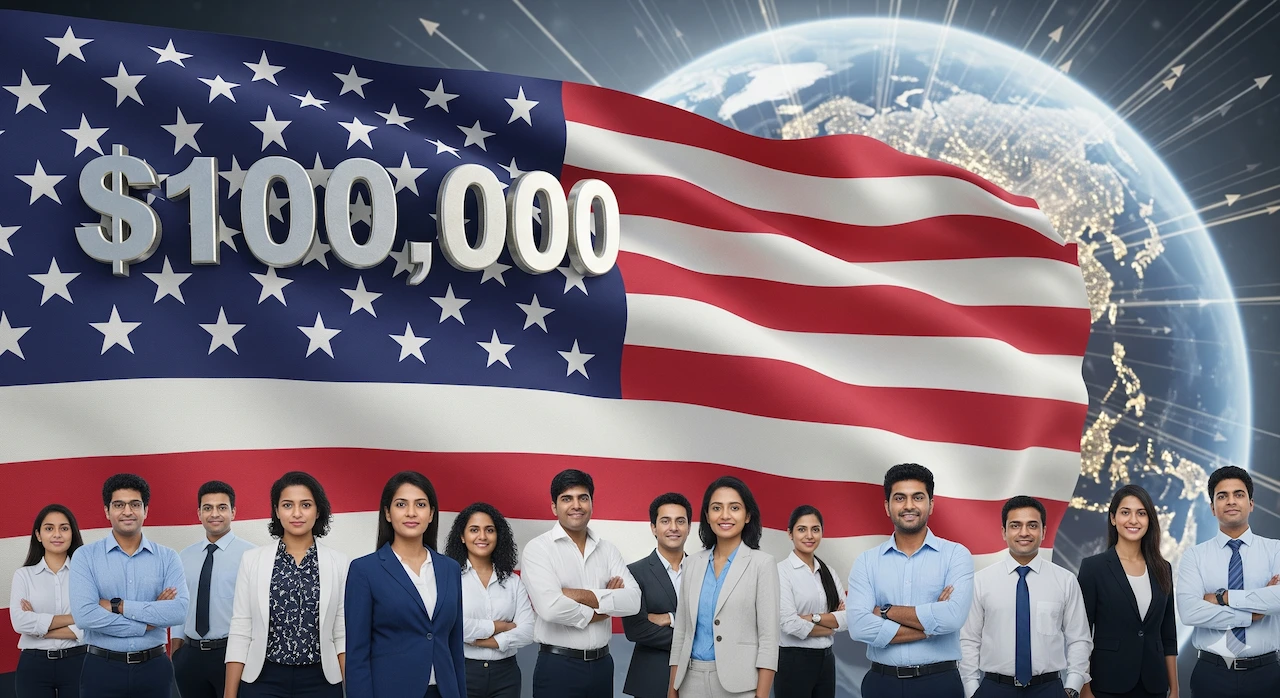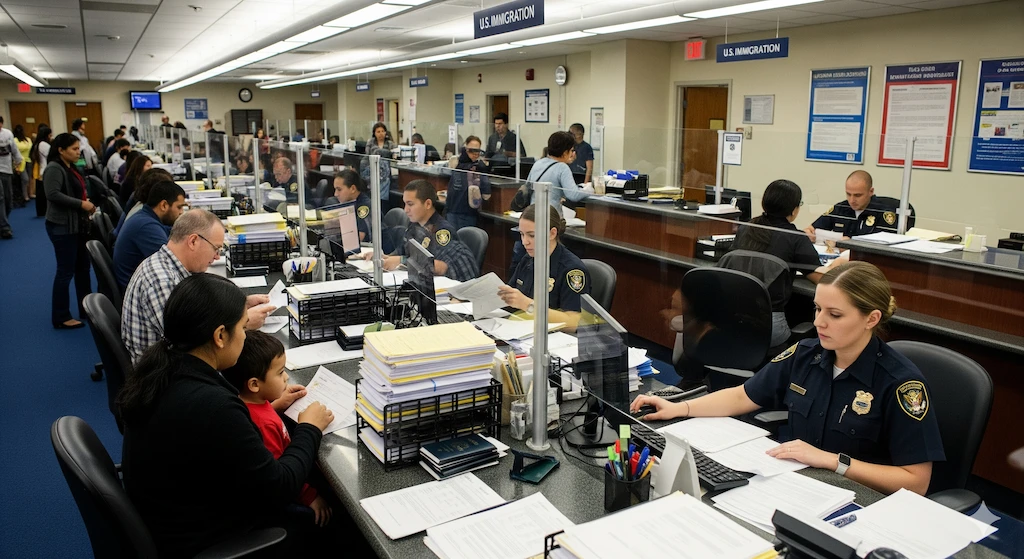GloNews10

US H-1B Visa Fee Hike 2025: Impact, Reactions, and Future of Skilled Immigration
The United States has once again reshaped the global conversation on skilled immigration. In September 2025, the US government announced a drastic H-1B visa fee hike, imposing a $100,000 fee per petition for new applicants filing from outside the country. The announcement has sent shockwaves through industries, governments, and aspirants worldwide — particularly in India, which accounts for a large share of H-1B workers.
This article takes a deep dive into the new policy, its reasons, its likely consequences, and how the global tech industry, foreign workers, and US employers are preparing for the changes.
The H-1B visa is a non-immigrant visa that allows US companies to employ foreign workers in specialty occupations requiring theoretical or technical expertise. Technology firms, healthcare institutions, and engineering companies rely heavily on this visa category.
For decades, it has been a critical pathway for Indian tech workers in America, Chinese engineers, and global talent in Silicon Valley. Companies like Google, Microsoft, Amazon, and Meta employ thousands of H-1B visa holders. Beyond the corporate world, the H-1B visa symbolizes the US’s status as a magnet for global talent.
With this new policy, however, the affordability and accessibility of the program face unprecedented challenges.
The new regulation came into effect at 12:01 AM ET, September 21, 2025. It mandates that any new applicant filing for an H-1B visa from outside the US must pay a $100,000 entry fee in addition to existing application costs.
Key highlights of the rule include:
This sharp hike transforms the H-1B application from a relatively expensive process into a near-impossible financial burden for small companies and individual applicants.
The official reasoning behind the hike revolves around two primary arguments:
While these reasons are presented as justifications, critics argue that the policy prioritizes political optics over economic realities.

India, being the largest source of H-1B applicants, reacted strongly. Trade bodies and the government expressed concerns over the discriminatory and prohibitive nature of the hike. Indian IT companies, including TCS, Infosys, and Wipro, are reassessing their US operations and may redirect resources to other markets.
Major tech firms expressed alarm at the rule. For them, access to global talent is essential. Microsoft CEO Satya Nadella and Google executives highlighted that such a fee threatens America’s leadership in innovation. Startups are particularly worried, as they cannot afford to pay $100,000 per employee.
For individual applicants, the announcement has been devastating. Many families preparing for relocation to the US now face uncertainty, financial stress, and potential abandonment of their plans. Forums and social media are filled with stories of panic, especially from Indian engineers and students abroad.

The fee hike places an enormous burden on employers, especially small and medium-sized enterprises. Larger corporations may absorb the costs, but startups and consulting firms will struggle. This could lead to fewer job opportunities for foreign workers and reduced competition in certain industries.
The biggest losers are aspirants — particularly Indian tech workers in America or those planning to move. For many, a $100,000 fee is out of reach. Even if employers sponsor the payment, workers may face increased bonds, reduced salaries, or stricter employment contracts.
Ironically, the policy could harm the very economy it aims to protect. By discouraging skilled immigration, the US risks losing its competitive edge. Canada, the UK, and Australia, which have friendlier immigration policies, may attract talent that would have otherwise chosen America.
The tech ecosystem thrives on cross-border talent. Limiting access to skilled workers could slow down innovation in AI, cybersecurity, and biotechnology — areas where competition with China and Europe is already intense.
Critics argue that the fee hike may not withstand legal scrutiny. Immigration law typically requires Congressional approval for such drastic changes, and legal experts suggest lawsuits are imminent. Questions include:
Civil rights groups have also raised concerns, noting that the policy disproportionately affects immigrants from developing countries while favoring wealthier applicants.
Beyond policy and economics, the fee hike affects human lives. Thousands of families preparing for relocation face uncertainty. Parents worry about their children’s education, spouses face career disruption, and many risk losing years of preparation and investment.
Stories emerging from Indian tech hubs like Bengaluru and Hyderabad show how the sudden policy shift has upended dreams. For some, Canada and Australia are becoming backup plans. For others, the US dream is slipping away altogether.
The US government has clarified certain exemptions:
However, the lack of clarity in exemptions has added to the confusion. Legal firms are advising applicants to proceed cautiously until official guidelines are fully published.
For those considering an H-1B application:
For employers:
Other nations, including Canada, Germany, and Australia, are making immigration easier, not harder. Canada’s Global Talent Stream, for instance, offers two-week processing for tech visas. Germany’s EU Blue Card encourages skilled immigration. By contrast, the US fee hike risks pushing talent away, undermining its global leadership.
The future of the H-1B visa fee hike depends on multiple factors:
For now, however, uncertainty looms large. Aspirants, employers, and governments worldwide are watching closely.
The H-1B visa fee hike is more than just an immigration policy — it is a reflection of shifting US priorities in 2025. While intended to protect domestic workers, the rule risks damaging America’s global competitiveness, hurting aspirants, and straining international relations, especially with India.
Whether the policy survives the next year or faces reversal, one thing is certain: the debate over skilled immigration and the future of US immigration policy 2025 will remain central to global economics and politics.
For Indian workers, US companies, and the global tech industry, the $100,000 fee marks a turning point in the story of skilled migration. The American dream, once accessible through education and expertise, now carries a price tag that few can afford.